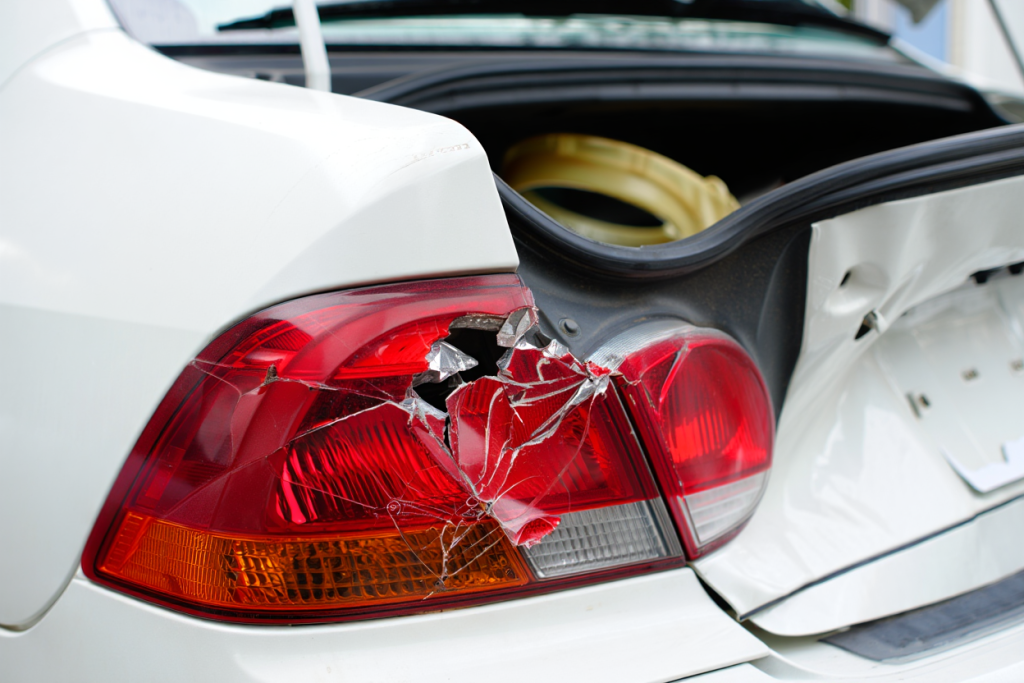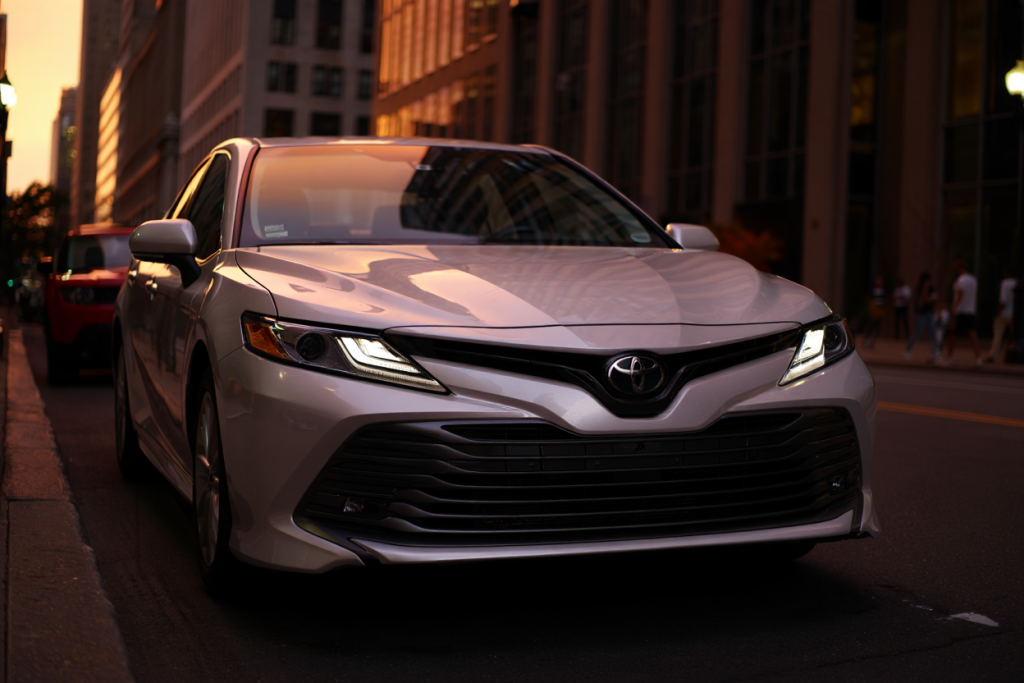Taillights are one of the most overlooked yet essential safety features on your vehicle. They communicate your position and intentions to other drivers, especially at night, in rain, fog, or other low-visibility conditions. Driving with a broken or malfunctioning taillight can put you at serious risk of accidents, traffic fines, and insurance complications.
Many drivers underestimate the importance of taillights, assuming a broken bulb is a minor issue. In reality, it affects road safety for you and others. This guide will explore the risks, legal implications, common causes, warning signs, maintenance tips, cost considerations, and FAQs to help you stay safe and compliant.
The Role of Taillights in Vehicle Safety
Taillights are not just decorative—they are critical for communication on the road.
How Taillights Work
- Visibility: Taillights illuminate the rear of the car at night and during low-light conditions.
- Signaling Intentions: Brake lights, turn signals, and hazard lights alert drivers behind you of stopping, turning, or potential hazards.
- Safety: Properly functioning taillights reduce rear-end collisions by increasing reaction time for following vehicles.
Consequences of a Broken Taillight
Driving with a broken taillight reduces visibility, confuses other drivers, and increases accident risk. A simple bulb failure can escalate into a serious safety hazard.
Legal Implications of Driving with a Broken Taillight
Driving with a malfunctioning taillight isn’t just unsafe—it can be illegal.
Traffic Laws Regarding Taillights
- Most states and countries require fully functioning taillights at all times.
- Failing to maintain them can result in traffic tickets or fines.
- Some regions enforce stricter penalties at night or in poor weather.
Insurance Considerations
- Accidents involving a vehicle with broken taillights may impact liability claims.
- Insurance companies may consider you partially at fault if your taillight contributed to the accident.
Real-World Example
A driver rear-ended another car in heavy rain at night. The at-fault car had a broken left taillight. The insurance investigation found the malfunctioning taillight contributed to the crash, affecting liability and payout.
Common Causes of Broken Taillights
Understanding why taillights fail helps prevent future problems.
1. Burned-Out Bulbs
- Most common cause of taillight failure
- Halogen bulbs last 450–1,000 hours; LED bulbs last much longer but can fail if the circuitry is damaged
2. Electrical Problems
- Blown fuses, corroded connectors, or damaged wiring
- Can cause intermittent lighting or complete failure
3. Physical Damage
- Cracks or breaks from collisions or road debris
- Water or moisture can enter, shorting the bulb or causing corrosion
4. Oxidized or Clouded Lenses
- Reduces light intensity
- Makes a working bulb appear dim or ineffective
5 Signs Your Taillights Need Attention
Recognizing warning signs early prevents accidents and fines.
1. Burned-Out or Flickering Lights
- Noticeable dimming, flickering, or non-functioning bulbs
- Check all brake, turn signal, and taillight functions regularly
2. Moisture or Water Inside the Housing
- Visible fogging or water drops inside the lens
- Can lead to short-circuiting or bulb failure
3. Cracked or Broken Lens
- Reduces light output and can allow water or dirt inside
- Often caused by minor accidents or road debris
4. Uneven Illumination
- One side is brighter than the other
- May indicate a worn bulb, poor connection, or electrical issue
5. Warning from Other Drivers
- Being flashed by drivers behind you may indicate your taillight isn’t visible
- Always inspect immediately if reported
Why Driving with a Broken Taillight Is Risky?
Reduced Visibility to Other Drivers
- Following drivers rely on taillights to gauge distance and reaction time
- A malfunctioning taillight can result in rear-end collisions
Miscommunication on the Road
- Broken brake or turn signals confuse other drivers
- Increases chances of accidents during lane changes, turns, or sudden stops
Legal and Financial Consequences
- Traffic tickets for broken lights can cost $50–$200 depending on jurisdiction
- Insurance claims may be complicated if the accident involves faulty taillights
Safety in Adverse Conditions
- Nighttime, rain, fog, and snow make broken taillights even more dangerous
- Proper illumination is critical to prevent collisions in low-visibility environments
How to Inspect and Maintain Taillights?
Regular inspection and maintenance can prevent accidents and legal issues.
Visual Inspection
- Check both taillights for cracks, dimming, or moisture
- Compare brightness to the opposite side to identify uneven illumination
Test Functionality
- Turn on the headlights, brake, and turn signals
- Ensure all lights illuminate as expected and no flickering occurs
Clean Lenses Regularly
- Remove dirt, salt, and debris that can reduce visibility
- Use car-safe cleaning solutions and microfiber cloths
Replace Bulbs Promptly
- Keep spare bulbs in your car for emergencies
- Replace immediately if a bulb shows signs of fading or failure
Check Electrical Connections
- Inspect wiring for corrosion or damage
- Replace blown fuses to restore functionality
Types of Replacement Bulbs for Corolla Taillights
Halogen Bulbs
- Affordable and widely available
- Lifespan: 450–1,000 hours
- Easy DIY replacement
LED Bulbs
- Long lifespan: 25,000+ hours
- Brighter and more energy-efficient
- Slightly higher upfront cost
OEM vs. Aftermarket Options
- OEM: Perfect fit, reliable, compatible with warranty
- Aftermarket: Often cheaper, may offer LED upgrades but quality varies
Cost Considerations
Replacing taillights is generally affordable but varies by type.
Typical Costs
- Halogen bulbs: $15–$30 per bulb
- LED bulbs: $50–$100 per bulb
- Complete taillight assemblies: $150–$400 depending on model
Labor Costs
- DIY replacement: minimal, 10–15 minutes per bulb
- Professional installation: $50–$100 if needed for assemblies
Long-Term Benefits
- Prompt replacement ensures safety
- Avoids fines, accidents, and insurance complications
Conclusion
Driving with a broken taillight is not just a minor inconvenience—it’s a serious safety hazard with legal and financial consequences. Dim, flickering, cracked, or moist taillights increase the risk of rear-end collisions, confuse other drivers, and may lead to traffic tickets.
Regular inspection, timely bulb replacement, and proper maintenance ensure your Corolla’s lights are fully functional.
FAQs
- Can I drive a car with a broken taillight?
Technically, yes, but it’s risky and often illegal. Reduced visibility increases accident risk, and law enforcement may issue a traffic ticket. Replace bulbs immediately for safety and legal compliance. - How much does it cost to replace a Corolla taillight bulb?
Halogen bulbs cost $15–$30, while LED bulbs may range from $50–$100. Complete assemblies may cost $150–$400. DIY replacement keeps labor costs minimal. - Will a broken taillight affect insurance claims?
Yes. If a rear-end accident occurs and your taillight was broken, insurance may assign partial fault. Keeping lights functional prevents liability issues. - How do I prevent taillight damage?
Regular cleaning, inspection, and avoiding rough roads or careless impacts help. Also, check seals and replace bulbs promptly to prevent electrical or moisture issues. - How can I tell if my taillight is not working properly?
Signs include dimming, flickering, uneven brightness, moisture inside the lens, or warnings from other drivers. Regular testing ensures safety and compliance.

Benjamin Grey is an automotive engineer and writer at Car Parts Advisor. With years of experience in the automotive industry, he shares expert advice on car parts, maintenance, and repairs to help car owners keep their vehicles running smoothly.





